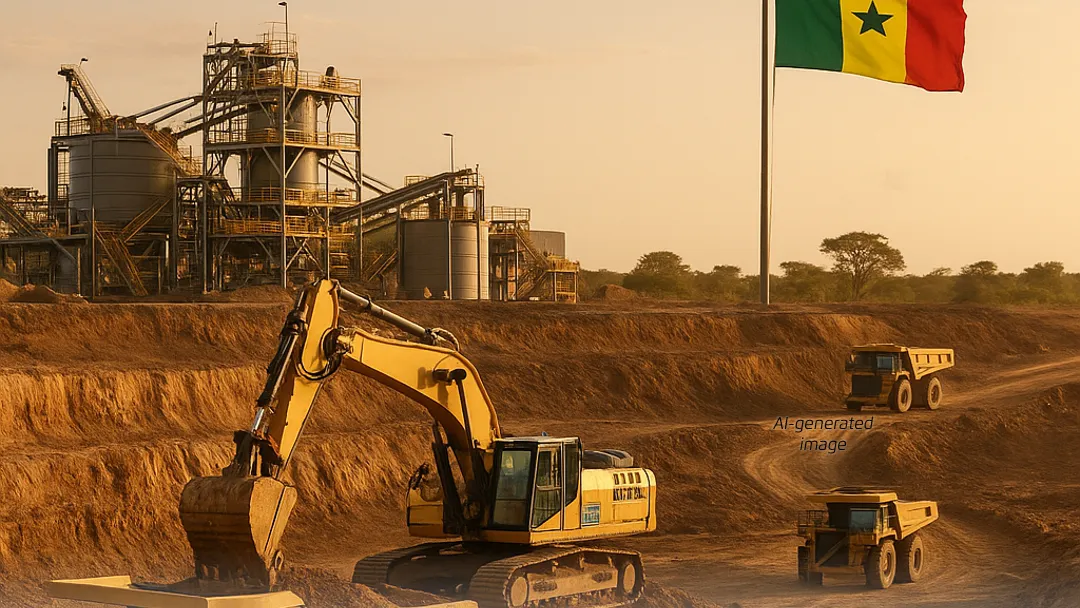Fortuna Plans Lightning Payback for Senegal Gold Project

Fortuna’s Diamba Sud gold project in Senegal shows a record 0.8-year payback and 72% IRR, setting a new benchmark for West African mining.
Fortuna Mining has unveiled a highly promising preliminary economic assessment (PEA) for its Diamba Sud gold project in Senegal, projecting what could be one of the fastest paybacks in the modern gold mining industry. According to the PEA, the project’s initial capital outlay of US$283.2 million could be recovered in just 0.8 years, less than ten months, once production begins. This exceptional payback rate, combined with a strong after-tax net present value (NPV) of US$563 million and an impressive internal rate of return (IRR) of 72%, positions Diamba Sud as a potentially transformative asset within Fortuna’s global portfolio and a new benchmark for mining economics in West Africa.
The PEA outlines a robust production plan, with total output estimated at 840,000 ounces of gold over an 8.1-year mine life, averaging about 106,000 ounces annually. The operation will employ an open-pit mining method, feeding ore into a carbon-in-leach (CIL) processing plant, a proven technology that enhances gold recovery from both oxide and fresh materials. During the initial three years, the project is expected to process around 2.5 million tonnes of high-oxide ore per year, before transitioning to approximately 2.0 million tonnes annually as mining moves deeper into fresh rock zones. The study assumes an all-in sustaining cost (AISC) of US$1,238 per ounce, underscoring the project’s strong profitability potential even under moderate gold price scenarios.
The resource base supporting these projections comprises 14.2 million tonnes of indicated resources grading 1.59 grams per tonne (g/t) gold for 724,000 ounces, and 6.2 million tonnes of inferred resources at 1.44 g/t gold for 285,000 ounces. Fortuna inherited Diamba Sud through its 2023 acquisition of Chesser Resources, a move that now appears strategically astute given the project’s exceptional economics and geographic synergies with Fortuna’s existing African operations. Investor sentiment has already reacted positively: the company’s share price surged by approximately 6.4% to C$13.70 following the announcement, its highest intraday level since listing, and has more than doubled year to date.
Looking ahead, Fortuna plans to complete a definitive feasibility study by mid-2026, paving the way for a construction decision soon after. If timelines hold, first gold production could commence by the second quarter of 2028. The Diamba Sud project has the potential to act as a powerful rerating catalyst, amplifying Fortuna’s organic growth trajectory and reinforcing confidence in the company’s disciplined yet ambitious expansion strategy. For Senegal, the development represents another step toward establishing the country as a serious gold-mining hub alongside regional leaders like Mali and Burkina Faso. If successfully executed, Diamba Sud could inject significant investment, employment, and infrastructure benefits into the local economy while solidifying West Africa’s reputation as one of the world’s most dynamic gold-producing regions.
Mini-Glossary
- Preliminary Economic Assessment (PEA): An early-stage study that evaluates the potential financial viability of a mining project based on preliminary data.
- Net Present Value (NPV): The difference between the present value of cash inflows and outflows over the project’s life, indicating its profitability.
- Internal Rate of Return (IRR): The rate of return at which the project’s net present value equals zero, a key profitability indicator.
- All-in Sustaining Cost (AISC): A comprehensive measure of total production cost, including sustaining capital, operating costs, and royalties.
- Carbon-in-Leach (CIL): A gold extraction process where activated carbon is added to the leach tanks to absorb dissolved gold directly from the ore slurry.
- Open-Pit Mining: A surface mining method used when ore bodies are close to the surface, allowing for large-scale extraction.
- Oxide vs. Fresh Material: Oxide ore is weathered and easier to process, while fresh (unoxidized) rock requires more energy-intensive processing.
